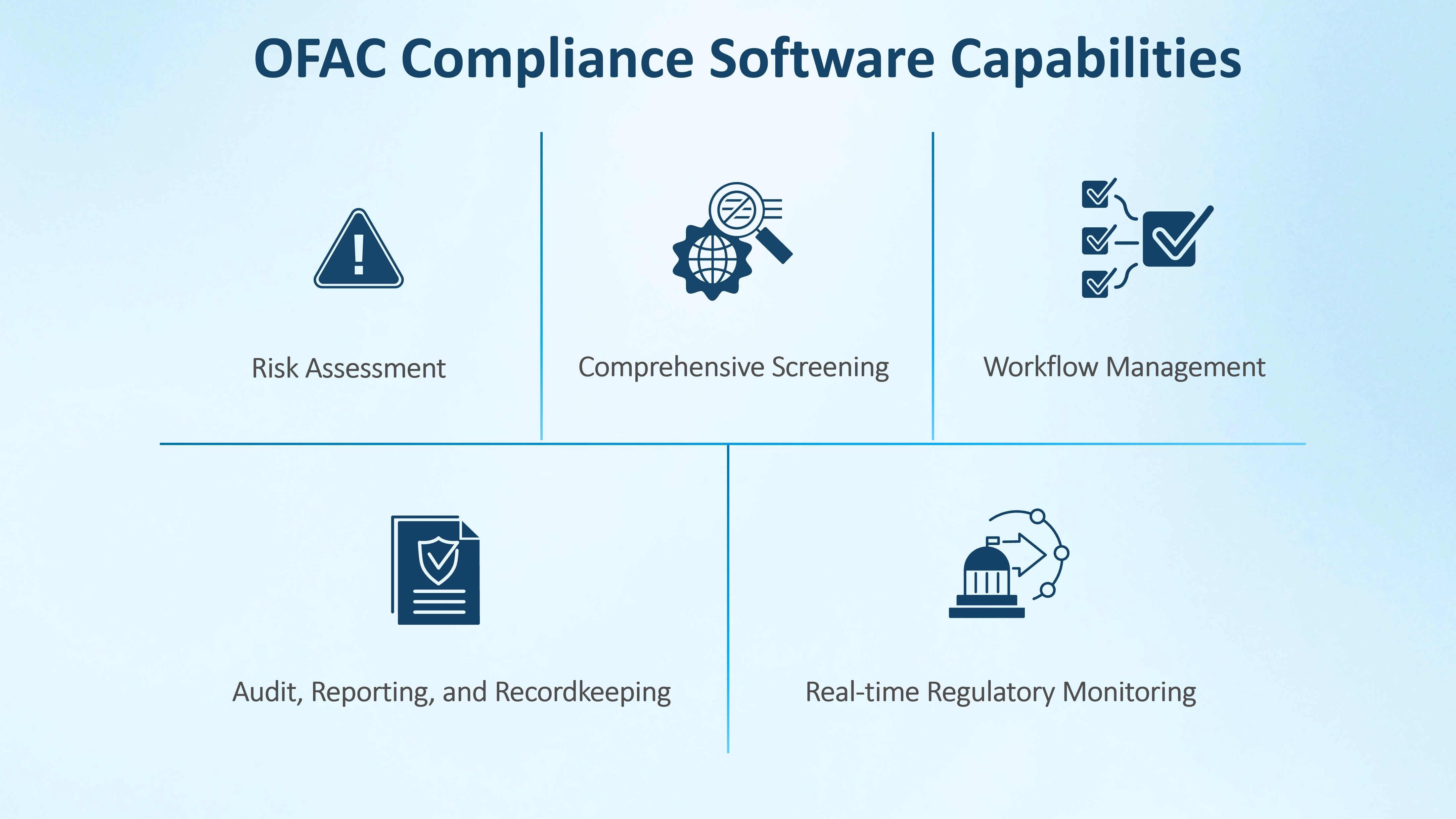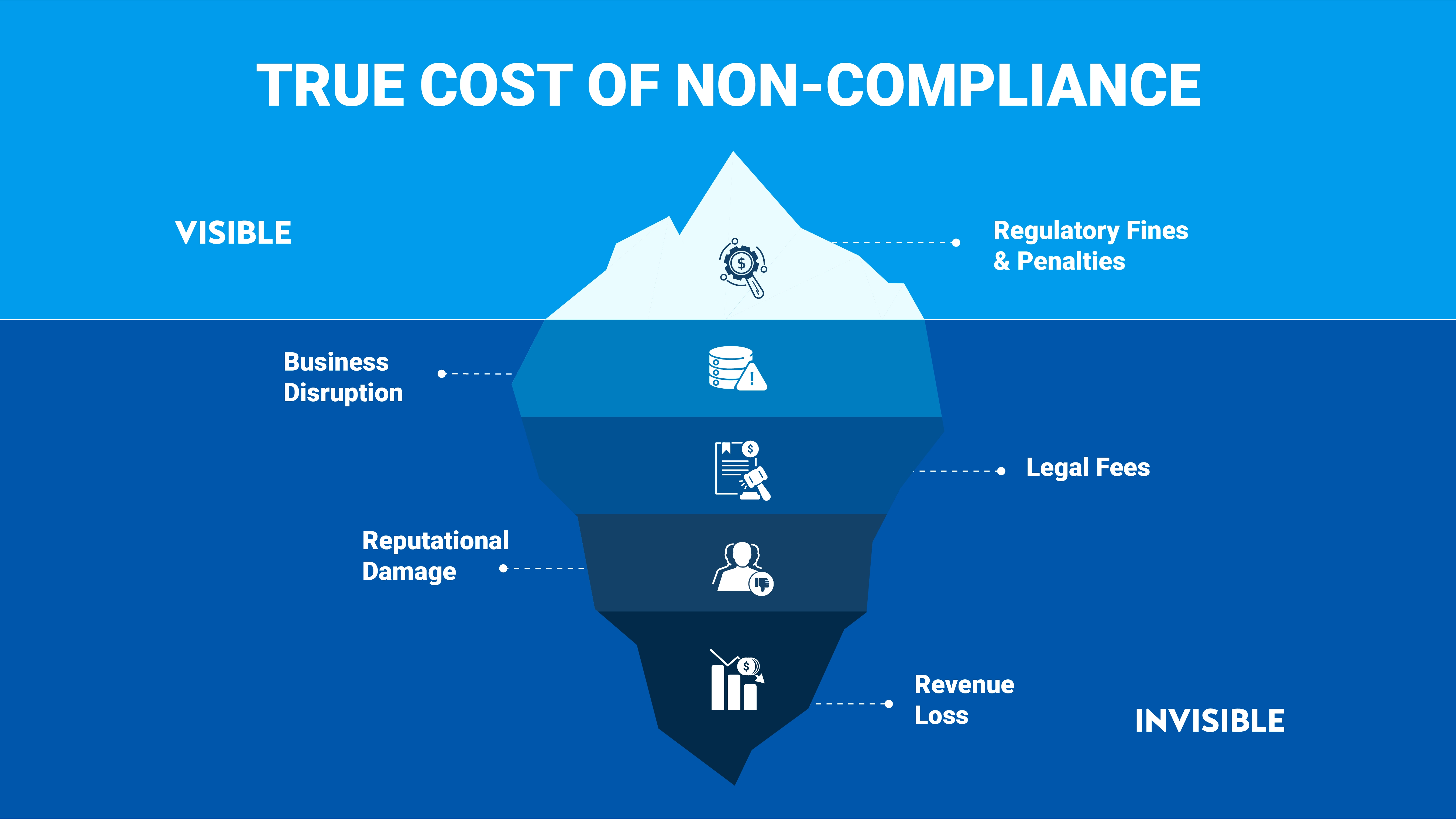The U.S. Office of Foreign Assets Control (OFAC) administers and enforces economic and trade sanctions against targeted countries, organizations, and individuals. For businesses, complying with OFAC regulations is essential to avoid transacting with sanctioned parties. Non-compliance can result in substantial fines, enforcement actions, and severe reputational damage. Achieving compliance requires screening new and existing partners against updated sanctions lists, maintaining detailed records, and ensuring accurate documentation for at least ten years.
Given the complexity and frequent updates to sanctions lists, automated software solutions have become crucial for ensuring efficiency and accuracy. However, the cost of OFAC compliance software remains a key concern for businesses, often delaying efforts to enhance their compliance programs. With a wide range of solutions available—each offering unique pricing models and features—it can be difficult to determine exact costs.
While cost is an important consideration when selecting compliance tools, it’s essential to evaluate the overall value they provide. In this article, we explore the costs, features, and return on investment (ROI) of OFAC compliance software to help you find the best solution for your organization.
Key Takeaways:
- OFAC compliance software is essential for efficiency, accuracy, and reducing the risk of severe penalties, including fines and enforcement actions.
- OFAC compliance software costs vary based on factors like business size, transaction volume, deployment type, and feature set.
- Core OFAC compliance features include critical functionalities such as sanctions list updates, automated risk detection, and comprehensive audit tools, ensuring regulatory adherence and efficient workflows.
- Most vendors do not readily divulge pricing, as such direct cost comparisons can be challenging. When choosing a solution, focus on the software’s capabilities, ease of use, and long-term scalability to determine the best fit for your compliance needs.
- Investing in OFAC compliance software is far more cost-effective than facing steep fines. It delivers ROI by automating due diligence, mitigating regulatory risks, and protecting businesses from financial and reputational harm.
The Cost of OFAC Compliance Software
The cost of OFAC compliance software can vary widely, depending on the features and capabilities offered. For organizations conducting low- to mid-volume screenings (5,000–20,000 annually), the average cost typically ranges between $1,200 and $2,500 per year. These solutions often come with basic automation and varying levels of support.
However, more advanced platforms designed for high-volume screening and complex implementations can cost substantially more. These solutions often include dynamic features like advanced risk scoring (to reduce false positives to more manageable levels), integration with multiple systems, and robust reporting tools, which contribute to higher pricing.
Pricing variability is influenced by several key factors:
- Business Nature and Size: Larger organizations or those in heavily regulated industries may require more extensive solutions.
- Deployment Type: Cloud-based solutions often offer flexible subscription models, while on-premises systems may involve significant upfront costs.
- Transaction Volume: Higher transaction volumes demand greater system capacity, impacting costs.
- Feature Set: Solutions with advanced automation, customization, and analytics capabilities typically carry a higher price tag.
- Customization Requirements: Tailored workflows or integrations can significantly increase implementation and ongoing expenses.
Top Features Driving the Final Cost of OFAC Compliance Software
The final cost of OFAC compliance software is largely determined by its features and functionalities, including:
- Sanctions list updates: this functionality ensures the software uses the latest data, reducing compliance risks. As it forms the basis of an OFAC screening solution, its impact on pricing is proportional to the complexity of compliance requirements. However, best-in-class solutions provide a large library of sanctions lists to screen for with minimal impact on the final cost.
- User numbers: these impact OFAC compliance software costs through per-user licensing fees, increased training and support needs, and scalability requirements. Larger teams may also require customized workflows and added administrative management, leading to higher implementation and operational expenses.
- OFAC screening frequency: continuous monitoring and batch screening, which enable simultaneous checks on multiple entities, demand robust infrastructure, moderately impacting costs. Ad hoc screening, being infrequent and more suitable to lower screening volumes, is less costly. However, organizations needing a mix of denied party screening methods see higher overall costs due to added complexity and resource requirements.
- Comprehensive audit and reporting tools: helps organizations meet regulatory recordkeeping mandates and support internal and external audits. While essential, these features are generally less costly than screening automation or customization but still add value.
- Automated risk detection: AI-driven features like predictive analytics, risk scoring, and dynamic updates enhance compliance, reduce false positives, and improve decision-making efficiency. This feature can impact overall costs, but the effectiveness and accuracy provided by these capabilities justify the pricing for robust solutions.
- Enhanced risk mitigation data: Incorporating additional content like sanctioned ownership data—crucial for OFAC's 50 Percent Rule compliance—adds value by enabling thorough due diligence but typically incurs extra costs due to its complexity.
- Available integrations: Connecting compliance software with CRM or ERP platforms streamlines workflows and enhances efficiency. Costs vary based on the type of integration—standard options such as sanctions screening in Salesforce are more economical.

Free OFAC screening tools are available, including the U.S. Treasury Department's official OFAC website, which offers a basic search tool for sanctioned entities. While useful for occasional checks, such tools often come with limitations such as manual processing, no real-time updates, and minimal functionality. For volumes exceeding 10 a week or complex compliance needs, these basic tools may not suffice, as they are not scalable, do not support efficient compliance workflows, nor provide comprehensive recordkeeping tools.
When evaluating OFAC compliance software, consider indirect expenses such as deployment, training costs to ensure team proficiency (sometimes charged separately, however, top-rated vendors offer free training and resources to ensure you maximize the solution’s value), and software updates, which may incur additional charges depending on the vendor's subscription model and the need to align with evolving regulations.
Finding the Right OFAC Compliance Software for Your Business
Once you’re ready to upgrade your OFAC screening process for full compliance—how do you choose the right vendor? Finding the best OFAC compliance software requires careful evaluation. Here’s how to make the right choice:
- Evaluate your business needs: What is your transaction volume, industry-specific regulations, and current compliance processes? Having a full understanding helps determine the required software capabilities.
- Interview vendors: When talking with vendors, discuss features, integration capabilities, update schedules, and support services. Ensure transparency about the solution’s scope and limitations.
- Utilize free trials and demos: Testing core features firsthand helps you evaluate the software’s usability and compatibility with your operations.
- Consider customization: Choose a solution that aligns with your current needs and can adapt as your business grows, ensuring long-term value.

Comparing Different OFAC Compliance Software Solutions
When comparing vendors, you’ll need to consider the following criteria:
- Experience in the industry: Select vendors with proven expertise in your industry to ensure they understand your unique compliance challenges.
- Comprehensive trade compliance: Some vendors offer additional capabilities, such as export license screening and advanced functionalities, adding more value to the solution.
- Testimonials: Check platforms like G2 and Capterra for user experiences and ratings.
- Scalability and adaptability: Choose platforms that can grow with your business and adapt to evolving compliance requirements.
Determining the ROI of OFAC Compliance Software
Looking at all the costs associated with OFAC compliance software implementation can be intimidating, but it’s crucial to consider the return on investment when evaluating pricing. Determining the ROI of OFAC compliance software requires balancing its investment cost against the potential consequences of non-compliance. While the upfront expense of a robust solution might seem high, the financial and reputational risks of non-compliance are far greater.
Recent OFAC penalties, such as the $1.04 million fine imposed on a California based machine tool manufacturer in 2025 due to its failure to conduct enhanced due diligence and identify sanctioned control and ownership within its customers, thereby violating the OFAC 50 Percent Rule, highlight the steep price of non-compliance. Beyond fines, businesses may face legal fees, operational disruptions, and reputational damage.
In comparison, an OFAC compliance solution with sanctioned ownership data costs an average of $20,000 annually to screen 100,000 transactions. This relatively modest investment enables businesses to automate denied party screening, identify complex ownership structures, and ensure compliance with evolving regulations.
In addition to avoiding penalties, the software streamlines due diligence processes, strengthens safeguards, and protects reputations. By delivering significant operational efficiencies and shielding organizations from legal and financial jeopardy, OFAC compliance software offers measurable ROI. Its true value lies in helping businesses maintain compliance, reduce risks, and support operational integrity, making it a critical investment for long-term success.

Drive Long-term Value with Descartes OFAC Compliance Solutions
OFAC compliance is complex, but robust solutions offer long-term value by reducing risks and enhancing efficiency.
Descartes offers comprehensive OFAC compliance solutions to help organizations meet current and evolving obligations. From automated risk detection to real-time monitoring and dynamic updates, the platform empowers your business to stay ahead of regulatory demands while protecting its bottom line.
Ready to achieve sustainable OFAC compliance success? Book a demo today and let our experts show you how Descartes can help protect your business and enhance your operations.
